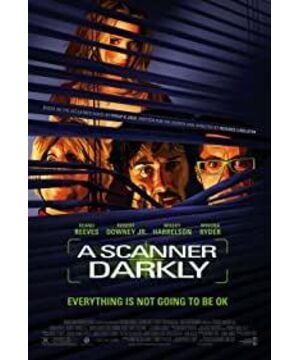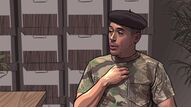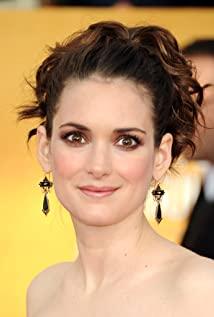Move old text. Written on 2007-02-20
"What does a scanner see? Into the head? Into the heart? Does it see into me? Clearly? Or darkly?" Dim?) Fred/Bob, played by Keanu Reeves, muttered to himself as he looked around the house where the camera lens was hidden.
What did I see? What kind of movie is "Dark Scanner"?
The first impression is the psychedelic image. It's not dazzling, it's not smooth, it's the slightly lagging dumbfounded after translating a real-life performance into an animation, it's the contrast between sometimes ugly and unrealistic and sometimes beautiful and unrealistic. It is firstly an adult cartoon. It is hard to say how much of the performance of the characters in the film is derived from the interpretation and performance of the actor himself, and how much of it is the retouching of the animator in the production. The director's control of the picture can go deep into the production. last step. For a sci-fi movie about drugs, Richard Linklater is right to insist on the form of animation. Some viewers don't understand why they want to make an animation, and they don't understand what those people are talking about. In fact, those people didn't do anything, they just took drugs for fun. That is the "realm" that people who have taken drugs can understand. It is always light and fluttering. The world in their eyes should be exaggerated, more colorful and darker than ordinary people, more empty and more trivial, happiness is easier to obtain, and sadness and fear are deeper and more difficult. escape. The real absurdity is mixed with the absurd reality, and the form of the picture itself allows the audience to experience the sense of the end of the world to the greatest extent. Author Philip K. Dick wants us to experience that kind of feeling. "Dark Scanner" is a semi-autobiographical novel based on his drug-taking experience. Reading the user reviews on imdb, some people said that they laughed when they saw Robert Downey Jr. and Woody Harrelson 's nonsense about bicycles, but I only found it slightly funny when I saw it. It's like watching "The Lost of the Ring", a self-entertaining film of the Lord of the Rings fans, laughing to death, while outsiders are inexplicable.
From the beginning of the film, I liked the image style of "Dark Scanner" very much, not only for the reasons mentioned above, but also because the animation gave me an illusion, as if I had drawn these pictures in my head and stroked them. Constantly looking for real characters in the play.
Doesn't this fit the story exactly? The story is that in the future seven years from now (it doesn’t seem to be the future, it’s so close), the United States is rampant with drugs, and one-fifth of the population is drug addicts. In order to combat drugs, the government implements all-weather surveillance on everyone (except for a major drug rehabilitation company). An undercover anti-narcotics policeman, who became addicted to his work (a miserable job!), gradually became schizophrenic, monitoring himself without knowing it. Did he catch the real drug dealer in the end? Have you found yourself? Who is a bad person is not the point, anyway, no one is a good person, just a poor person.
The production process of "Dark Scanner" has attracted much attention. The focus is on Richard Linklater's insistence on using rotoscoping to describe the real scene from beginning to end into animation. This method is not new, it has been a long time ago. There was a "Waking Life" that also used this technique in 1988. He felt that to be faithful to the original work, reposting was the most appropriate method. But it is very troublesome to do so. The live-action shooting of this film was completed in six weeks. It was very simple. Because it was going to be animated, the actors didn't have any makeup. The post animation production has been delayed for almost a year and a half. I still remember that its release date was pushed back and forth, waiting for people's necks to grow. "Wired" (Wired) magazine once had an interview, describing the chaos in the animation production process of this film, how to develop better software, how to unify the styles of different animators, how to solve the connection between the near and far, and how to hurry. Linklater said he would never make cartoons anymore.
But all the trouble is worth it. The picture of "Scanner" is complicated and simple, and it is artistically messy. There are real shots in the DVD footage, which is quite different from the final product. Especially the invisibility cloak, it has to be done with animation. The dress will change its appearance constantly, so that no one can recognize who is in the dress, and the voice of the person wearing the dress will be changed, so that everyone does not know who the undercover is. Whenever Keanu wore a cloak, the animator painted his eyes very beautifully (see the first picture).
In terms of content, this film mainly talks about drugs and self-lost. Keanu’s character later didn’t know who he was. He hoped that the monitors (scanners) in the room would know who he was, otherwise he really didn’t. Know who to ask. The other characters are the same. And the ending is not hopeful, so I plan to keep going so dark. I like this tune. As for the government's surveillance of the people, I believe the French boy in The Matrix: Choice is an illusion created between those with power and those without. (Choice is an illusion created between those with power and those without.) I have no illusions about freedom or civil society.
Very interesting film. Also, don't take drugs.
View more about A Scanner Darkly reviews











